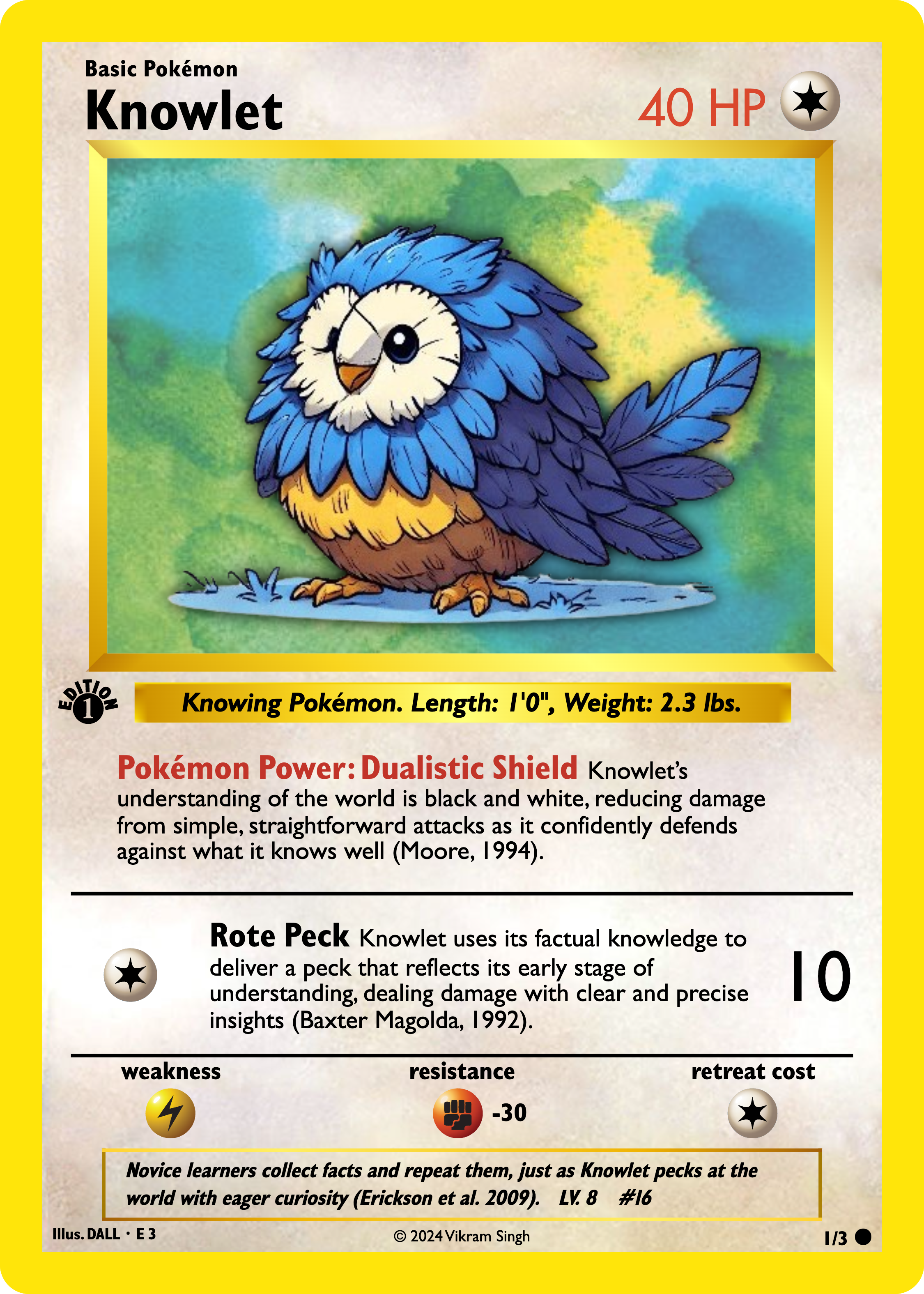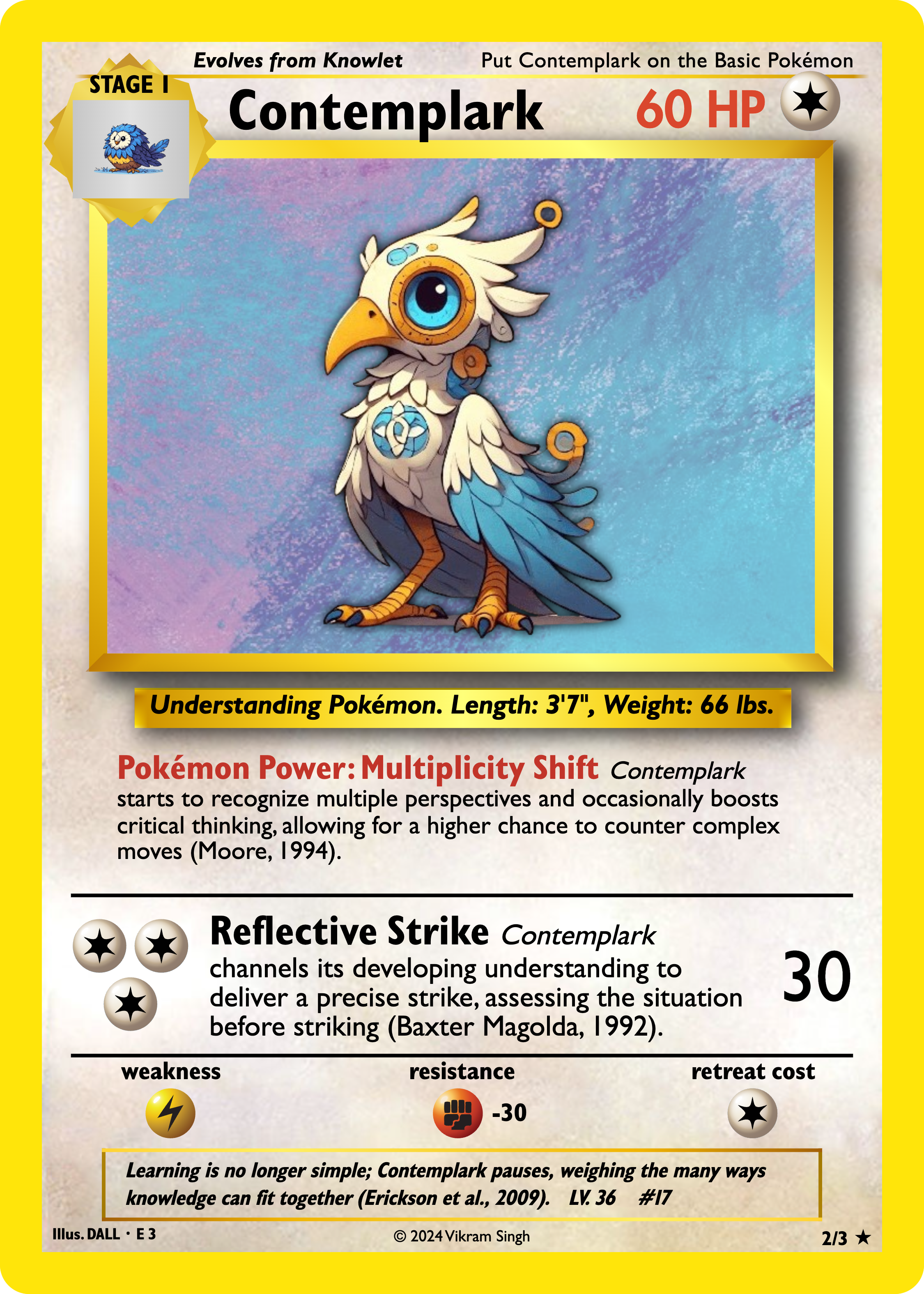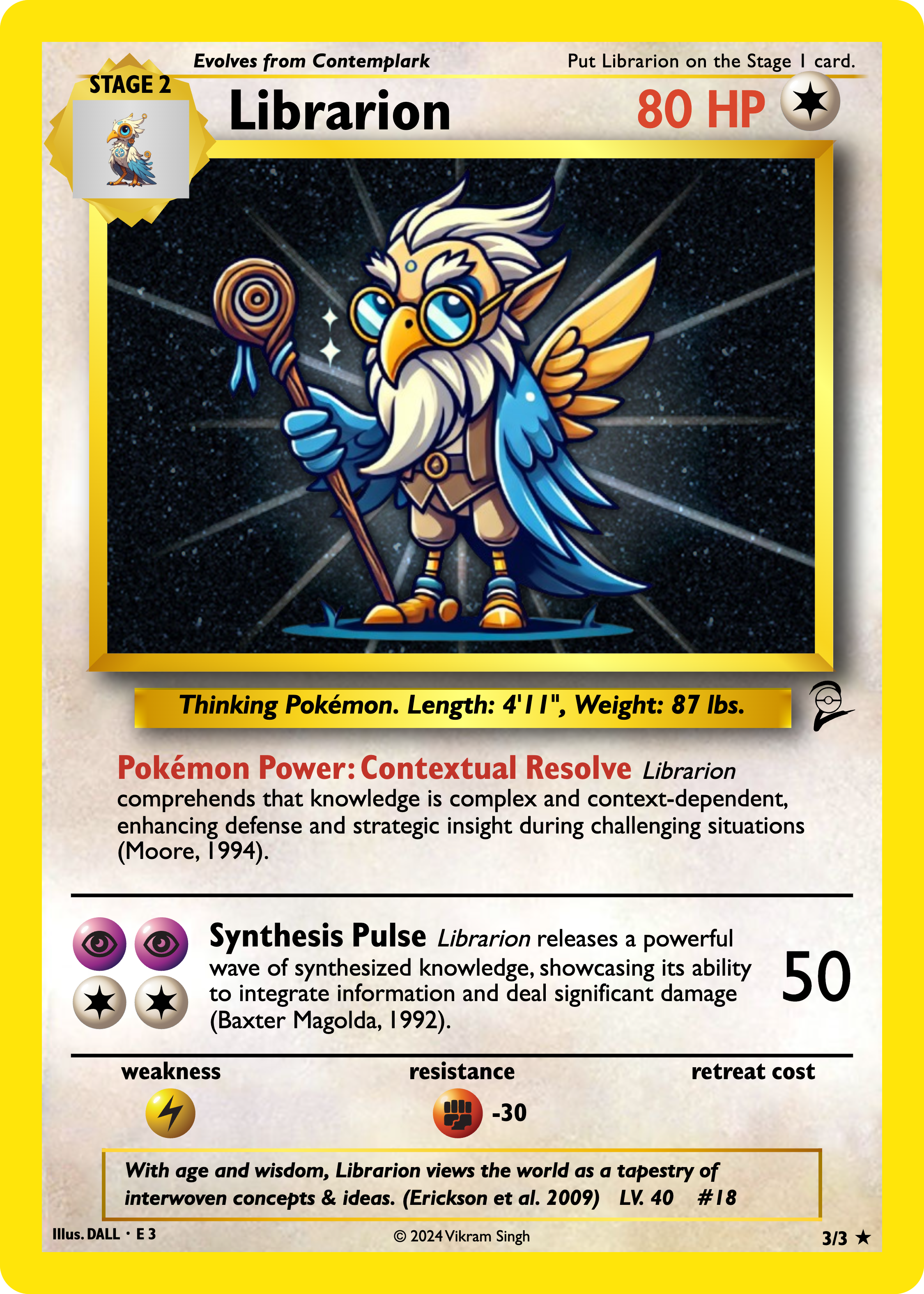Student Development Stages
Meet the stages of cognitive development through our Pokémon-inspired trio: Knowlet, Contemplark, and Librarion. Each represents a unique phase in student development stages described by the conceptual models below.
 |
 |
 |
|---|
To incorporate Barr and Tagg’s shift from the Instruction Paradigm to the Learning Paradigm, we can weave their principles into this note, particularly as a framework for understanding why a teaching-centered approach falls short as students progress in their cognitive and epistemological development. Here’s how this might look:
Both Baxter Magolda’s (1992) Responsive Teaching and Moore’s (1994) take on the Perry Schema look at how students move from seeing knowledge as fixed to understanding it as something more complex and shaped by context. This shift parallels what Barr and Tagg (1995) describe as moving from the Instruction Paradigm, where the focus is on delivering content, to the Learning Paradigm, where the goal is to create an environment that supports students’ active learning and meaning-making. In this paradigm, teaching isn’t just about covering material; it’s about fostering environments where students take ownership of their learning.
Ramsden’s (2003) ideas on deep and surface learning tie into this, showing how students’ approaches to learning evolve in similar ways. Erickson et al. also follow this pattern, describing a shift from basic knowing to deeper, higher-order thinking. In the early stages, students tend to stick with surface learning—focusing on memorization and looking to authority for clear answers—just as we see in Perry’s Dualism and Baxter Magolda’s Absolute Knowing. At this level, they’re all about finishing tasks rather than really digging in and understanding, which aligns with the Instruction Paradigm, where knowledge is seen as something to be delivered and absorbed rather than critically engaged with.
As students start to transition, things get a little more complicated. In Perry’s Multiplicity stage and Baxter Magolda’s Transitional Knowing, they begin to realize that there’s more than one way to see things, though they might not yet know how to handle that complexity. This stage often still includes some surface learning, but if teaching strategies encourage discussion and reflection, it can help push them toward deeper engagement. Erickson’s framework lines up here as well, moving from basic knowledge into understanding and applying, and Ramsden would agree that this is where students start making more meaningful connections. Barr and Tagg’s Learning Paradigm suggests that instructional approaches here should shift to environments that enable students to encounter, discuss, and question ideas rather than passively receive them, supporting their movement toward independent thought.
Then we get to the more advanced stages, Perry’s Contextual Relativism and Baxter Magolda’s Contextual Knowing, where students fully embrace a deep learning approach. At this point, they’re not just taking in information; they’re thinking critically, making connections, and applying what they know in new ways. Ramsden’s concept of deep learning really shines here, as students learn to analyze, synthesize, and create. This also matches up with Erickson et al.’s higher level of thinking, where students don’t just understand—they apply and adapt knowledge thoughtfully. Teaching strategies for this stage should involve activities like case studies and complex projects, which encourage students to think independently and apply their knowledge in meaningful ways, fully embodying Barr and Tagg’s Learning Paradigm by placing students in charge of their own intellectual development.
Together, these four models highlight how teaching needs to adapt as students move from surface-level learning to a place where depth, understanding, and real-world application take center stage.